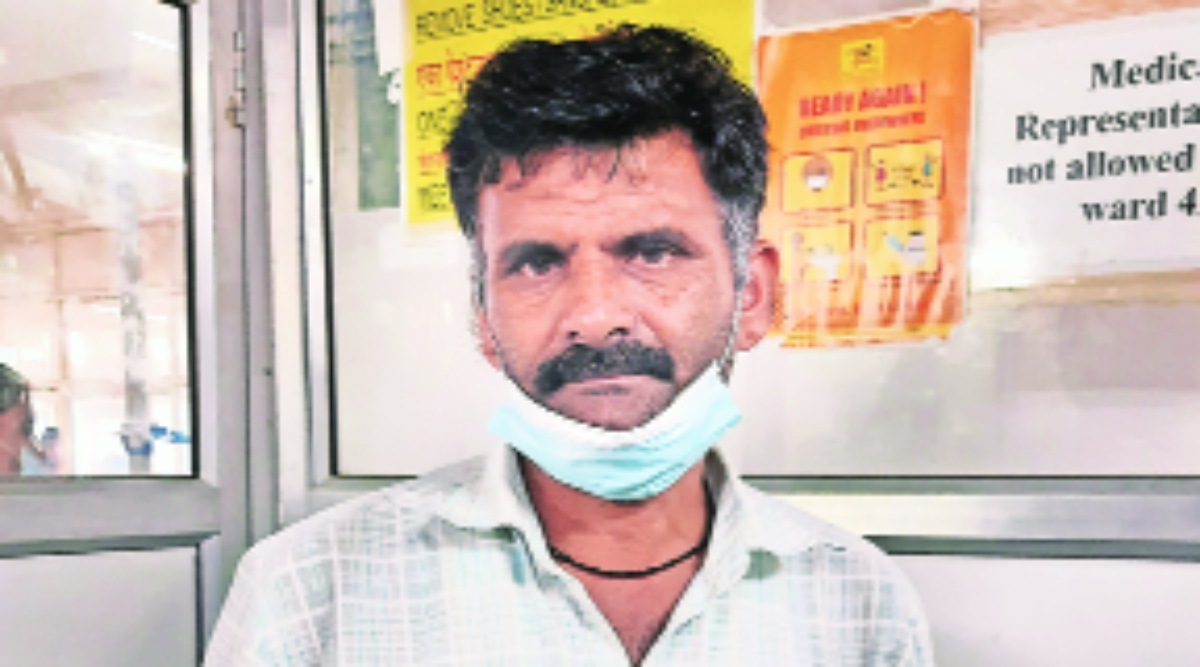 Sanjay Bhittam travelled for 380 km from his hometown Kolhapur to Mumbai with his ailing wife. (Express)
Sanjay Bhittam travelled for 380 km from his hometown Kolhapur to Mumbai with his ailing wife. (Express)DESPITE BEING the second most populated state in India, Maharashtra doesn’t have a government-run bone-marrow transplant facility for adults suffering from acquired aplastic anaemia. This has left patients in a lurch as they can’t afford to pay Rs 15-25 lakh for transplant in private hospitals. The lack of a transplant facility has further contributes to the high fatality rate which goes unreported as the state lacks mechanism to record it.
Sanjay Bhittam (46) travelled for 380 kms from his hometown Kolhapur to Mumbai with his ailing wife whose haemoglobin count is below 5 grams per deciliter, much lower than the standard healthy range of 11.6 grams per deciliter.
His wife, Indubai Bhittam (43) was detected with acquired aplastic anaemia in June. Since then, due to the unavailability of specialised healthcare facilities around Kolhapur, they have to travel by train every month to reach Mumbai’s King Edward Memorial (KEM) hospital, Parel for her treatment.
Doctors have now advised Indubai a bone-marrow transplant. However, as the facility is not available in any public hospital in Maharashtra, he will either have to sell off his cultivated land to pay for the surgery at a private hospital or travel to AIIMS-Delhi where the treatment is free but the waiting list is long. “There are so many such cases but the state doesn’t have a single centre where my wife can undergo the transplant free-of-cost,” Bhittam said.
His is not an isolated case. On a daily basis, the haematology department of KEM hospital—the biggest civic-run department in Mumbai — gets about 5-6 such cases, of which 70 per cent are related to acquired aplastic anaemia.
Aplastic anaemia is a rare, serious blood disorder where the bone marrow fails to produce blood cells. They are of two types — inherited which is caused because of gene defects, and is most common in children and young adults, and acquired aplastic anaemia which is more common in adults. It is believed that some viruses such as HIV or Epstein-Barr, certain medications and toxic chemicals are among the triggers for such problems in the immune system.
“In aplastic anaemia, the body’s immune system gets weakened. The patients suffer from severe anaemia, bleeding and infection. It is a life-threatening disease which has a much higher mortality than blood cancer,” said a doctor associated with KEM hospital, adding, “If the patient doesn’t get timely treatment such as blood transfusion, he/she will die within days or even hours.”
As most patients can’t afford the surgery at a private hospital, they are administered a therapy—usually ATG and cyclosporine that temporarily suppresses the immune system. However, even with the therapy, the success rate is only 30-40 per cent for such patients.
“We start the treatment by injecting ATC for five days. Then, for the next one year, we keep them on other immunosuppressed medicines along with others depending on their health,” said Dr Parth Ganatra, Paediatric Hematology-Oncology, Nanavati Hospital. “If they don’t respond to the treatment, bone-marrow transplant is the only option for survival. It comes with 100 per cent guarantee that the patient will live. But sadly, as there are no such government-run centres, the patients struggle to arrange money for the surgery at private hospitals,” Ganatra added.
Many patients can’t even afford the treatment which costs around Rs 8 lakh annually. Priyanka Sharma (27) from Kalyan, one of the few patients to have responded to the treatment, spends nearly Rs 50,000 per month on medication.
Speaking to The Indian Express, Dr Mahendra Kendre, ADHS, blood cell, of the State’s Directorate of Health Service, said that the state doesn’t have any data on the total number of patients suffering from aplastic anaemia. “For sickle cell anaemia and thalassaemia, we issue health cards. So we have the approximate data for the two blood-related diseases. But we don’t have the data of aplastic anaemia,” he said.